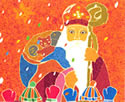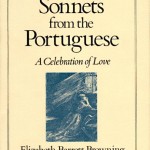Nick and I met HRH Princess Tatiana of Greece last summer at
an event in Las Vegas where everyone was given her book “A Taste of Greece,”
which is published in four languages and available in 72 countries, with all
profits from the book going to charitable causes. Born in Caracas, Venezuela, (née Tatiana
Blatnik), the tall, glamorous blonde studied in Switzerland, got her BA from
Georgetown, and in 2010 married HRH Prince Nikolaos, son of Greece’s former King
Constantine, on the island of Spetses, Greece.
She is an entrepreneur and philanthropist, heading organizations that
support women leaders around the world, provide food for impoverished children
and teenage mothers, and aid to unaccompanied refugee children in Greece.
Just yesterday I saw a blog post on her official website www.tatianablatnik.com--a
beautifully written essay about her introduction to Greece long ago through
reading my husband’s book “Eleni” about his mother’s life and her death to save
her children, and then, 14 years later, meeting our daughter, Eleni, her
grandmother’s namesake. I’m going to
quote some of the princess’s essay here, but you can read it all and learn more
about Tatiana and her good works by clicking on https://tatianablatnik.com/reflecting-on-milos/
Reflecting on Milos, Greece
and life coming full circle
In 2003, when Nikolaos and I took our first trip to Greece together, he
gave me a book called ELENI by Nick Gage. As we sat on the plane
from London to Athens, I began reading it and found that I couldn’t put the
book down! Through its pages, I not only learned so much about Greece’s recent
history, but moreover I became emotionally involved with its main character,
Eleni Gatzoyiannis, and my eyes filled with tears as I read her harrowing, true
story…
Fast forward a year and there I was the other day, pulling my hand luggage behind me as Nikolaos and I walked through the airport — yet again! — when I passed the newsstand and noticed the new issue of CondeNast Traveller, featuring Eleni’s cover story on Milos. Suddenly it hit me: life comes full circle and everything in it is interconnected.
“Isn’t it amazing?” I couldn’t help but remark to Nikolaos. For who would have imagined that 14 years after Nikolaos’ and my first trip to Greece, during which time I’d read Eleni Gatzoyiannis' story, I would be here today, a resident of the country she fought so hard for, having been interviewed by her granddaughter and carrying within my luggage the icon that she’d given me.













